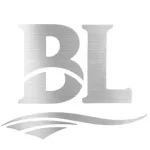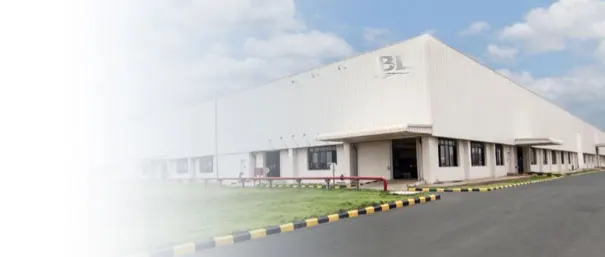ASTM 317L Stainless Steel: High-Molybdenum Austenitic Grade for Enhanced Corrosion Resistance in Harsh Environments
ASTM 317L (UNS S31703) is a low-carbon, high-molybdenum austenitic stainless steel designed for superior corrosion resistance in aggressive chemical and high-chloride environments. With 3-4% molybdenum content—significantly higher than 316L—it excels in resisting pitting, crevice corrosion, and stress corrosion cracking (SCC) while maintaining excellent weldability and formability. This grade is widely specified for pharmaceutical processing, marine applications, pulp/paper equipment, and chemical storage where standard 304/316 alloys prove inadequate. Below are its technical specifications, performance characteristics, and application guidelines.
1. Chemical Composition (ASTM A240/A480 Standard)
| Element | Content Range | Function |
|---|---|---|
| Carbon (C) | ≤ 0.030% | Ultra-low carbon prevents intergranular corrosion after welding; improves weldability |
| Chromium (Cr) | 18.00 – 20.00% | Forms passive Cr₂O₃ film; provides baseline oxidation and corrosion resistance |
| Nickel (Ni) | 11.00 – 15.00% | Stabilizes austenitic microstructure; enhances toughness and resistance to reducing acids |
| Molybdenum (Mo) | 3.00 – 4.00% | Critical for pitting/crevice corrosion resistance (PREN ≥ 33); resists chloride attack |
| Manganese (Mn) | ≤ 2.00% | Improves hot workability; partial substitute for nickel in cost-sensitive applications |
| Silicon (Si) | ≤ 1.00% | Enhances oxidation resistance at high temperatures; aids deoxidation during melting |
| Phosphorus (P) | ≤ 0.045% | Minimized to prevent embrittlement and reduce susceptibility to intergranular attack |
| Sulfur (S) | ≤ 0.030% | Controlled to avoid hot cracking during welding and maintain ductility |
| Nitrogen (N) | ≤ 0.10% | Stabilizes austenite; improves strength and resistance to localized corrosion |
2. Mechanical Properties (Annealed Condition)
- Tensile Strength (σb): ≥ 515 MPa (75 ksi) per ASTM A240
- Yield Strength (σ0.2): ≥ 205 MPa (30 ksi); higher than 304/316 due to molybdenum content
- Elongation (δ): ≥ 35% (excellent ductility for deep drawing and cold forming)
- Hardness (HB): ≤ 217 Brinell (softer than martensitic grades; ideal for fabrication)
- Impact Toughness (CVN): ≥ 100 J at -46°C (-50°F); retains toughness in sub-zero temperatures
- Pitting Resistance Equivalent (PREN): ≥ 33 (calculated as %Cr + 3.3×%Mo + 16×%N)
3. Manufacturing Process & Metallurgical Control
- Melting: Electric arc furnace (EAF) + argon oxygen decarburization (AOD) or vacuum oxygen decarburization (VOD) to achieve ultra-low carbon and nitrogen control. Secondary refining ensures inclusion removal for critical applications.
- Hot Rolling: Conducted at 1150–1260°C with rapid water quenching to prevent sigma phase precipitation and retain austenitic structure. Thickness tolerance controlled per ASTM A480.
- Cold Rolling: For thin gauges (≤ 5mm), multi-stage cold reduction with intermediate annealing at 1040–1120°C to relieve stresses and restore corrosion resistance. Surface finishes include 2B, BA, and No. 4.
- Heat Treatment: Solution annealing at 1040–1150°C followed by water quenching to dissolve intermetallic phases (e.g., chi, sigma) and homogenize the microstructure.
- Surface Passivation: Nitric acid (20–50% HNO₃) or citric acid passivation per ASTM A967 to enhance the chromium oxide layer, particularly for pharmaceutical/food-contact applications.
4. Corrosion Performance & Environmental Suitability
| Corrosion Type | Performance | Comparison to 316L | Typical Applications |
|---|---|---|---|
| Pitting Corrosion | Excellent (PREN ≥ 33) | Superior (316L PREN ≈ 25) | Seawater cooling systems, desalination plants |
| Crevice Corrosion | High resistance | Better due to higher Mo | Flanged joints, gasketed connections |
| Stress Corrosion Cracking (SCC) | Resistant in chloride environments | Comparable; both require stress relief | Hot water tanks, chemical reactors |
| General Corrosion | Outperforms 316L in acids | Better in sulfuric, phosphoric acids | Pharmaceutical processing, fertilizer production |
| Intergranular Corrosion | Resistant (L-grade) | Equivalent (both ≤ 0.03% C) | Welded fabrications, heat exchangers |
5. Key Application Industries
Pharmaceutical & Biotech
Fermenters, sterilization equipment, and piping systems where purity and corrosion resistance to cleaning agents (e.g., NaOH, H₂O₂) are critical. Compliant with ASME BPE and FDA 21 CFR.
Marine & Offshore
Seawater handling systems, ballast tanks, and offshore platform components exposed to chloride-rich spray and splash zones. Preferred over 316L for extended service life.
Chemical Processing
Storage tanks, scrubbers, and reactors for sulfuric acid (up to 10% at 80°C), phosphoric acid, and organic acids. Resists polythionic acid stress cracking in refineries.
Pulp & Paper
Bleach plants, digesters, and recovery boilers where resistance to chloride-induced corrosion and sulfur compounds is required. Outperforms 316L in white liquor environments.
Food & Beverage
High-salt food processing (e.g., soy sauce, brine solutions) and dairy equipment where 304/316 may suffer pitting. Approved for direct food contact per EC 1935/2004.
Pollution Control
Flue gas desulfurization (FGD) systems, scrubbers, and wastewater treatment equipment exposed to acidic condensates and chlorides. Resists “green death” (FeCl₃ + CuCl₂ + HCl).
6. Comparison with Related Grades
| Grade | Mo Content | PREN | Key Advantages | Limitations |
|---|---|---|---|---|
| 304/304L | 0% | 18–20 | Cost-effective; good formability | Poor chloride resistance; prone to pitting |
| 316/316L | 2.0–2.5% | 25–28 | Versatile; balances cost and performance | Insufficient for high-chloride or acidic environments |
| 317L | 3.0–4.0% | 33–38 | Superior pitting/crevice resistance; high-temperature stability | Higher cost; limited availability in thin gauges |
| 904L | 4.0–5.0% | 35–40 | Maximum resistance to sulfuric acid | Expensive; lower strength than duplex grades |
| 2205 (Duplex) | 3.0–3.5% | 34–38 | Higher strength; resistant to SCC | Poor formability; limited to ≤ 6mm thickness |
7. Fabrication & Welding Guidelines
- Machining: Use carbide tools with slow speeds (60–90 sfm) and heavy feeds to avoid work hardening. Coolant is recommended to dissipate heat and extend tool life.
- Forming: Suitable for deep drawing, spinning, and bending. Springback is higher than carbon steel; overbending by 2–3° may be required for tight radii.
- Welding: Preferred methods: GTAW (TIG) or GMAW (MIG) with ER317L filler metal. Preheat not required; post-weld annealing (1040–1150°C) recommended for critical applications to restore corrosion resistance.
- Heat Treatment: Avoid sensitizing temperatures (425–850°C) to prevent chromium carbide precipitation. Stress relief at 400–500°C is safe if rapid cooling follows.
- Cleaning: Remove weld discoloration with pickling paste (HNO₃ + HF) or electrochemical polishing. Avoid chloride-containing cleaners to prevent pitting.
8. Supply Forms & Specifications
| Product Form | Standards | Thickness/Size Range | Surface Finishes |
|---|---|---|---|
| Sheets/Plates | ASTM A240, ASME SA240 | 0.5mm – 50mm | 2B, BA, No. 4, HL, Mirror |
| Coils/Strips | ASTM A240, AMS 5524 | 0.1mm – 6mm (width ≤ 1500mm) | 2B, BA, Bright Annealed |
| Pipes/Tubes | ASTM A312, A358 | OD 6mm – 610mm (SCH 5S–XXS) | Annealed, Pickled, Polished |
| Bar/Rod | ASTM A276, A479 | Diameter 3mm – 300mm | Black, Peeled, Polished |
| Fittings/Flanges | ASTM A403, B366 | 1/2″ – 24″ (DN15–DN600) | Pickled, Electropolished |
9. Request a Quote for ASTM 317L Stainless Steel
Need ASTM 317L stainless steel in custom sizes, finishes, or forms? Our inventory includes sheets, coils, pipes, and bars with mill test reports (MTR) and third-party inspections (e.g., PMI, UT) available. Contact our team for competitive pricing, lead times, and technical support tailored to your project requirements.
.content-wrap {
width: 100%;
max-width: 1200px;
margin: 0 auto;
padding: 20px 30px;
font-family: “Arial”, “Helvetica”, sans-serif;
color: #333;
line-height: 1.8;
}
.article-title {
font-size: 28px;
color: #222;
font-weight: 700;
margin: 0 0 30px;
padding-bottom: 15px;
position: relative;
border-bottom: 2px solid #eee;
}
.article-title::after {
content: “”;
position: absolute;
left: 0;
bottom: -2px;
width: 120px;
height: 2px;
background-color: #2c5282;
}
.article-intro {
font-size: 16px;
color: #444;
margin: 0 0 40px;
text-align: justify;
}
.section-title {
font-size: 22px;
color: #2c5282;
font-weight: 600;
margin: 50px 0 25px;
padding-left: 15px;
border-left: 4px solid #2c5282;
}
.table-container {
width: 100%;
overflow-x: auto;
margin: 0 0 30px;
}
.spec-table, .compare-table {
width: 100%;
border-collapse: collapse;
background-color: #fff;
box-shadow: 0 2px 5px rgba(0,0,0,0.05);
}
.spec-table th, .spec-table td,
.compare-table th, .compare-table td {
padding: 12px 15px;
border: 1px solid #eee;
text-align: left;
}
.spec-table th, .compare-table th {
background-color: #f8f9fa;
color: #2c5282;
font-weight: 600;
}
.spec-table tr:hover, .compare-table tr:hover {
background-color: #fafafa;
}
.property-list, .process-list, .precaution-list {
padding-left: 20px;
margin: 0 0 35px;
}
.property-list li, .precaution-list li {
margin: 0 0 12px;
font-size: 15px;
}
.process-list li {
margin: 0 0 18px;
font-size: 15px;
}
.property-list strong, .process-list strong, .precaution-list strong {
color: #2c5282;
}
.application-grid {
display: grid;
grid-template-columns: repeat(auto-fit, minmax(280px, 1fr));
gap: 25px;
margin: 0 0 40px;
}
.application-item {
padding: 20px;
background-color: #fafafa;
border-radius: 6px;
border: 1px solid #eee;
}
.application-item h3 {
font-size: 18px;
color: #2c5282;
margin: 0 0 12px;
font-weight: 600;
}
.application-item p {
font-size: 14px;
color: #555;
margin: 0;
}
.quote-cta-section {
margin: 60px 0 20px;
padding: 30px;
background-color: #f8fafc;
border-radius: 8px;
border: 1px solid #e2e8f0;
}
.quote-cta-content {
max-width: 800px;
margin: 0 auto;
text-align: center;
}
.quote-cta-content p {
font-size: 16px;
color: #475569;
margin: 0 0 30px;
line-height: 1.8;
}
.quote-cta-btn {
display: inline-block;
padding: 12px 35px;
background-color: #2c5282;
color: #fff;
font-size: 16px;
font-weight: 600;
text-decoration: none;
border-radius: 4px;
transition: background-color 0.3s ease;
}
.quote-cta-btn:hover {
background-color: #1e3a8a;
}


